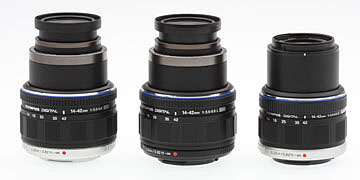| 14-42mm |
$150 average price |
|---|---|
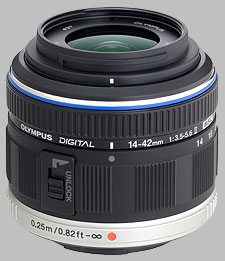
|
|
Your purchases support this site
Micro Four Thirds - Black
SLRgear Review
February 22, 2011
by Andrew Alexander
Towards the end of 2010, Olympus announced the replacement to its kit lens for the E-P1, the 14-42mm ƒ/3.5-5.6 M.Zuiko, in the form of a ''mark II'' version of the same lens. However there's much more than a name change at work here - the lens has been completely redesigned.
The kit lens for the new Olympus E-PL2 micro four-thirds camera, the 14-42mm ƒ/3.5-5.6 II M.Zuiko produces an effective field of view of 28-84mm when mounted on a compatible camera body. The micro four-thirds format will restrict compatible bodies to micro four-thirds mounts only; anything else would cause vignetting.
This lens isn't a ''constant'' lens, in that as you increase the focal length, the widest aperture is restricted (showing a higher f-number). The following table reflects the changes:
| Focal length | 14mm | 18mm | 25mm | 35mm | 42mm |
| Widest aperture | ƒ/3.5 | ƒ/3.9 | ƒ/4.4 | ƒ/5.2 | ƒ/5.6 |
| Smallest aperture | ƒ/22 at all focal lengths | ||||
The Olympus 14-42mm ƒ/3.5-5.6 II zoom lens takes 37mm filters and is available as the kit lens with the E-PL2 camera, or separately for around $300.
Sharpness
When the E-P1 was released with the first generation of this lens, The Imaging Resource was the only website to report a problem with the lens. Specifically, at certain shutter speeds, a blurring of details was present photos taken with the lens. This problem was due to at least three factors: the first was the original firmware, the second was the way this lens gets loose when extended (causing "lens lash," or movement of the front elements during exposure, particularly at 25, 35, and 42mm positions), and the third was the vibration from the bouncing of the shutter affecting the image stabilization system.
Now, my guess is that the first thing you're going to do is bring up our review for the previous version of this lens in order to compare its performance with this version to see what the lens lash looked like. However, you'll see that in our testing, the lens actually performed quite well. The reason is because our test shots were made at 1/60 second or below on a stable platform, while the problem only becomes noticeable when the camera is handheld at shutter speeds ranging from 1/100 to 1/160 second.
The good news is that we duplicated our tests with both the original lens and the new lens on both the original E-P1 and the E-PL2, and while the old lens still exhibits the problem on both cameras, the new lens does not show the problem on either camera. We’re happy to report that Olympus’s redesign of the collapsible kit lens eliminates what we saw as a noticeable flaw, and we can safely recommend the 14-42mm II kit lens that’s now bundled with the E-PL2.
In terms of sharpness as we usually test it, the Olympus 14-42mm ƒ/3.5-5.6 II M.Zuiko performed fairly well in our blur testing, certainly as good as or better than you'd expect for such a small and lightweight kit lens. When used at the widest end of its capability - 14mm and ƒ/3.5 - it provides a generous sweet spot of sharpness, tailing out to some very light corner softness. Stopping down to just ƒ/4 almost completely removes this softness, and by ƒ/5.6 it's essentially tack-sharp across the frame. Diffraction limiting sets in by ƒ/8, but you don't really notice any drop in performance until ƒ/11, where there is slight generalized softness across the frame.
In the mid-range (18-35mm) results are somewhat similar. At the widest end of the lens' performance (ƒ/3.9-5.2) the lens produces a small central portion of sharpness, degrading to softness in one corner or another; these results suggest some light de-centering with our sample of this lens. At 18mm and 25mm, stopping down to ƒ/5.6 removes this softness significantly, while at 35mm you need to stop down to ƒ/8 to get the sharpest results at that focal length.
At the longest setting, 42mm, the lens offers only above-average performance - there's no setting which offers tack-sharp images, and it's a toss-up between ƒ/8 and ƒ/11 for the best performance at this focal length. At any focal length, fully stopped-down performance is locked at ƒ/22 - and best avoided, as consistently mediocre.
Chromatic Aberration
The new version of the 14-42mm M.Zuiko has dramatically improved its tolerance to chromatic aberration, specifically at the wide end (14mm), where it was most noticeable. It's still there if you look for it - magenta-blue fringing on the edges of high-contrast areas - but it's very slight indeed.
Shading (''Vignetting'')
There's just very light corner shading when using this lens, and only in two scenarios - with the aperture wide open at 14mm or 18mm. In these cases you're looking at corners which are either a half-stop darker than the center (14mm) or a third of a stop (18mm).
Distortion
As the performance for distortion is almost exactly identical to what we noted in the ''version I'' of this lens, I'll quote from that review: There's a typical amount of wide-angle distortion when used at 14-18mm - +0.7% barrel distortion along the edges and in the corners - but it is uncomplicated distortion that would be easily fixable in post-processing. At 25mm the distortion evens out and is essentially non-existent from there all the way to 42mm.
Autofocus Operation
The Olympus 14-42mm ƒ/3.5-5.6 II M.Zuiko is very fast to autofocus, taking less than a second to go through its entire focusing range. The lens adopts the new MSC (Movie & Still Compatible) design, making it ideal for use in both still and video applications. The front element does not rotate when focusing, making life that much easier for polarizer users.
Macro
Curiously, macro performance has taken a bit of a hit compared to the previous model - just 0.19x magnification instead of the previous 0.24x magnification. Minimum close-focusing distance is unchanged at 25cm (just under a foot).
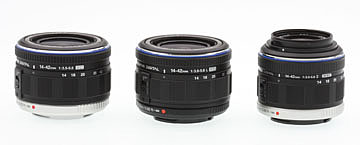 |
| The three versions of the lens, with the barrel retracted. |
Build Quality and Handling
The 14-42mm ƒ/3.5-5.6 II M.Zuiko is an all-plastic lens, quite small given the design parameters of the micro four-thirds system. What's truly remarkable is that the new version of the lens is even smaller and lighter than the previous one - just 112 grams - having shaved off 38 grams from an already petite optic. As you can see in the photo above, though, the lens is 6mm longer than its predecessor, owing partly to the accessory bayonet mount on the front (See Accessory Lenses below). The lens features a matte black finish with a silver band by the lens mount. A silver-barrelled version is also available. The plastic filter threads are even smaller than its predecessor - 37mm instead of the oddly-sized 40.5mm - but again, this is in keeping with the miniscule profile of the lens. The lens mount is metal.
There's an Unlock switch on the lens whose purpose is unconventional compared to the usual lens lock, so as simple as it is, some explanation is required. The lens is stored in its retracted position, and the camera will not operate while the lens is retracted; an error message instead displays on the LCD. To deploy the lens, you turn the barrel to the left. Once you pass the 14mm mark, the lens Unlock switch clicks, effectively preventing the lens from accidentally retracting again when you move the zoom ring to the 14mm position. In a sense, this mechanism locks the lens into its open, usable position, and you must slide the Unlock switch forward to release the lens so that it can again retract for storage. This operation is unchanged from the predecessor lens. There is no distance scale on the 14-42mm II M.Zuiko, and neither is there a depth-of-field scale.
The zoom ring is a half-inch wide, plastic with alternating raised ribs sections that run lengthwise to the lens. The ring turns about 50 degrees through its range of focal lengths, and is quite easy to turn. There is some significant lens extension as the lens is zoomed out towards the tele end; specifically, the lens gets a half-inch longer at the widest angle setting (14mm) or the tele setting (42mm). At 25mm, it's at its shortest length. When retracted below 14mm for storage, the lens hides about an inch of itself within its structure.
The focus ring is located at the end of the lens, an indented plastic ring just 3/16'' wide. The ring is a fly-by-wire design, controlling focus electronically, so there are no hard stops at either the infinity or close-focus ends. It's not the most friendly of manual focus designs, but the 100% magnification on the LCD really helps nail an accurate focus. Given that focus is electronically controlled, you can assign the direction of focus to be either left or right.
A notable improvement on the mark II version of the lens is that the front element does not rotate during focusing operations. Our sample didn't ship with a lens hood, and it's not clear whether one is available or not.
Accessory lenses
Another prominent feature of the new kit lens is the bayonet mount on the front, which sticks out noticeably even with the lens fully retracted. Users can attach three newly announced accessory lenses: the Fisheye (FCON-P01), Wide-angle (WCON-P01), and Macro (MCON-P01) lens converters. The 14-150mm and 40-150mm lenses can also accept the Macro conversion lens, which means that there must be some kind of step-down adapter for the 14-42mm lens to work with it, as the bayonet mount on the latter two telephoto lenses are larger, at 58mm, while the mount on the kit lens is set at 37mm (that's actually the measurement of the internal diameter, used for filters, but apparently it's close enough).
Alternatives
At the time of writing, things are starting to look interesting for the micro four-thirds mount; with Sigma, Carl Zeiss, and Schneider-Kreuznach having recently announced they will be making lenses for micro four-thirds bodies, there should be some more choice in the foreseeable future. But for now, the alternatives are somewhat limited.
Olympus 14-42mm ƒ/3.5-5.6 ED M.Zuiko Digital ~$n/a
Our tests show that the new version of the lens is definitely sharper than the old, and particularly poor performance for CA at 14mm has also been addressed. Results for corner shading and distortion are about the same.
Olympus 14-150mm ƒ/4-5.6 ED M.Zuiko Digital ~$600
The 14-42mm is slightly sharper than the 14-150mm for the ranges that they have in common, and it's a third-stop faster at 14mm - but, the 14-150mm has a much longer range of available focal lengths. CA and corner shading show more issues, but to its credit, the 14-150mm shows almost no distortion.
Panasonic 14-45mm ƒ/3.5-5.6 ASPH MEGA O.I.S. LUMIX G VARIO ~$300
The Panasonic kit lens provided extremely good performance on the G1, though using the Panasonic lens on the Olympus body does not necessarily guarantee the same performance.
Panasonic 14-140mm ƒ/4-5.8 ASPH MEGA O.I.S. LUMIX G VARIO HD ~$750
Panasonic's all-in-one lens offers the same range of focal lengths and then some, and is as sharp or sharper at the same settings; results for CA and distortion were equally impressive. As noted above, using the Panasonic lens on the Olympus body may not necessarily provide this level of performance.
Conclusion
The Olympus 14-42mm ?/3.5-5.6 II M.Zuiko fared very well in our tests, showing that Olympus lens designers have not been idle. The complete redesign of the lens has proven very effective at removing the lens lash problem we detected with the first version. It's nice to see Olympus address the issue, making the very practical and small kit lens easier to recommend. Remember, too, that this version of the lens is compatible with accessory lenses to enhance the wide-angle and macro abilities, as well as to add fisheye.
Product Photos
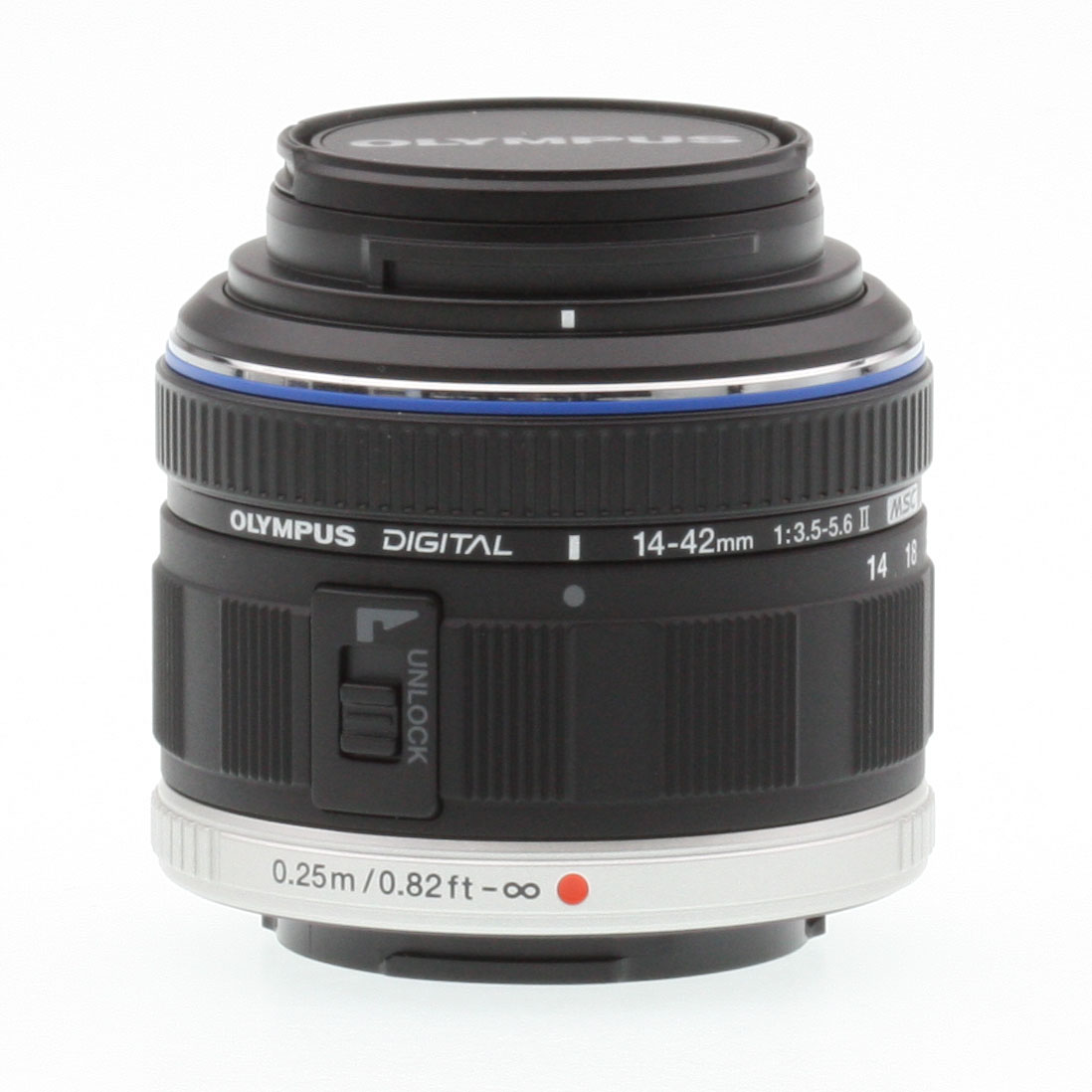 |
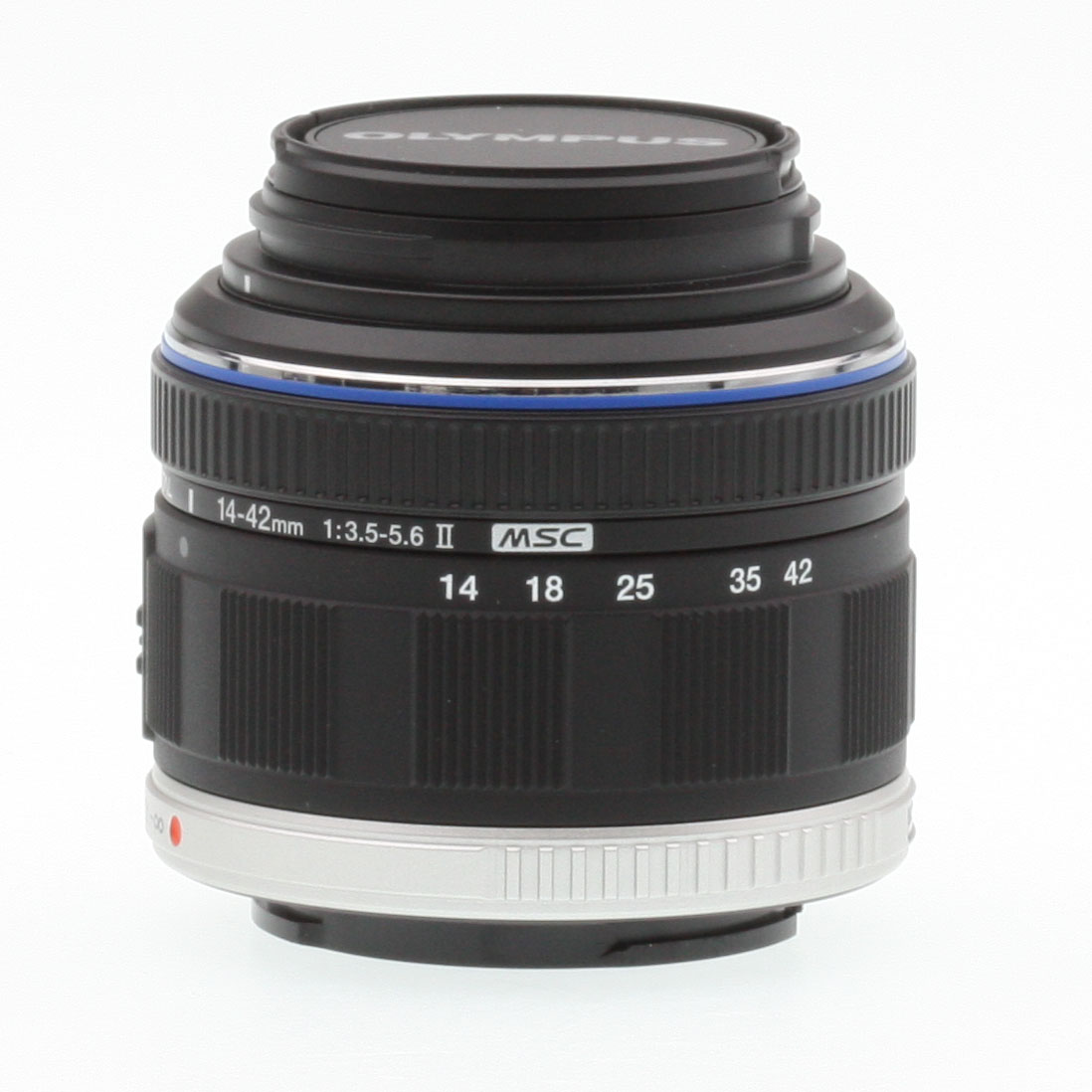 |
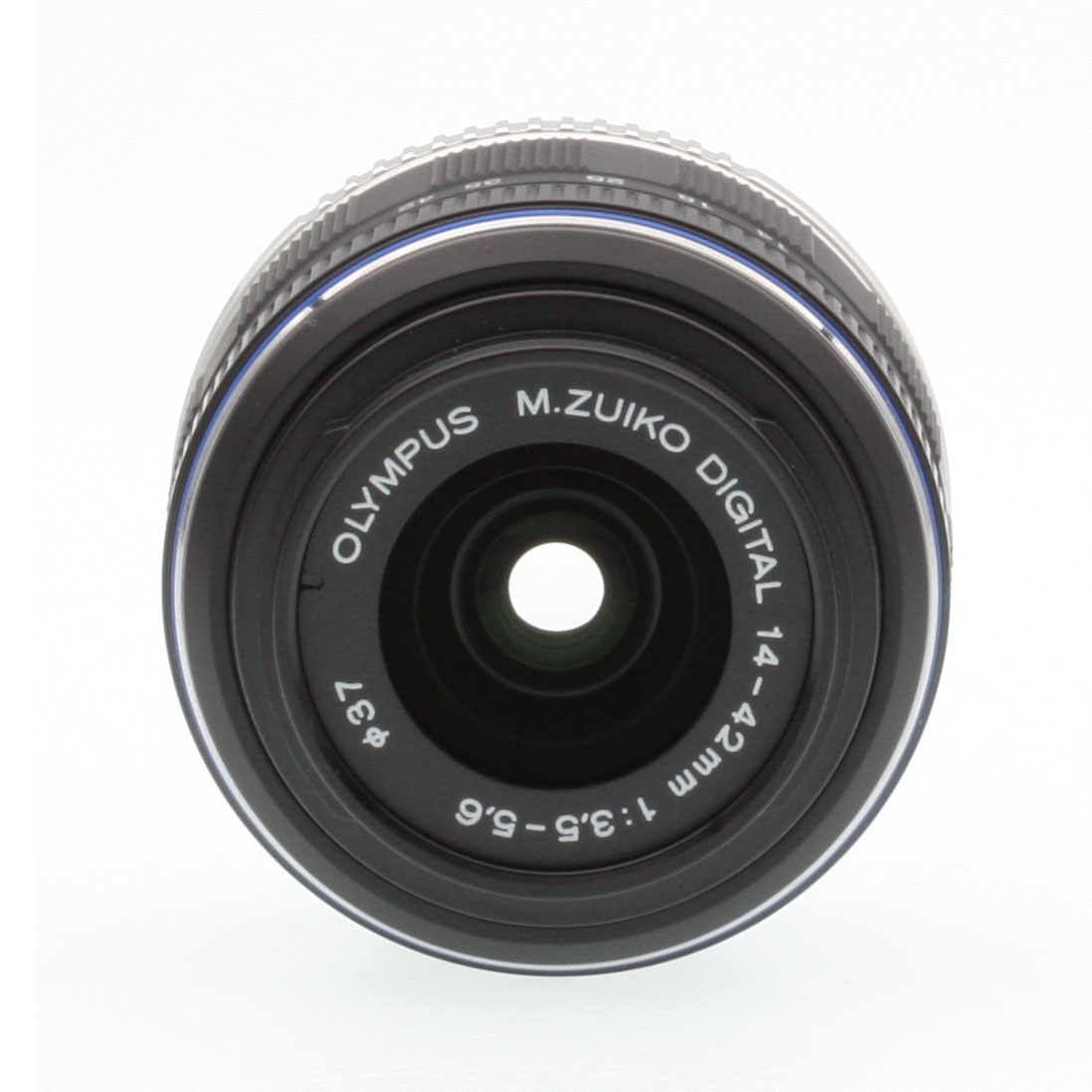 |
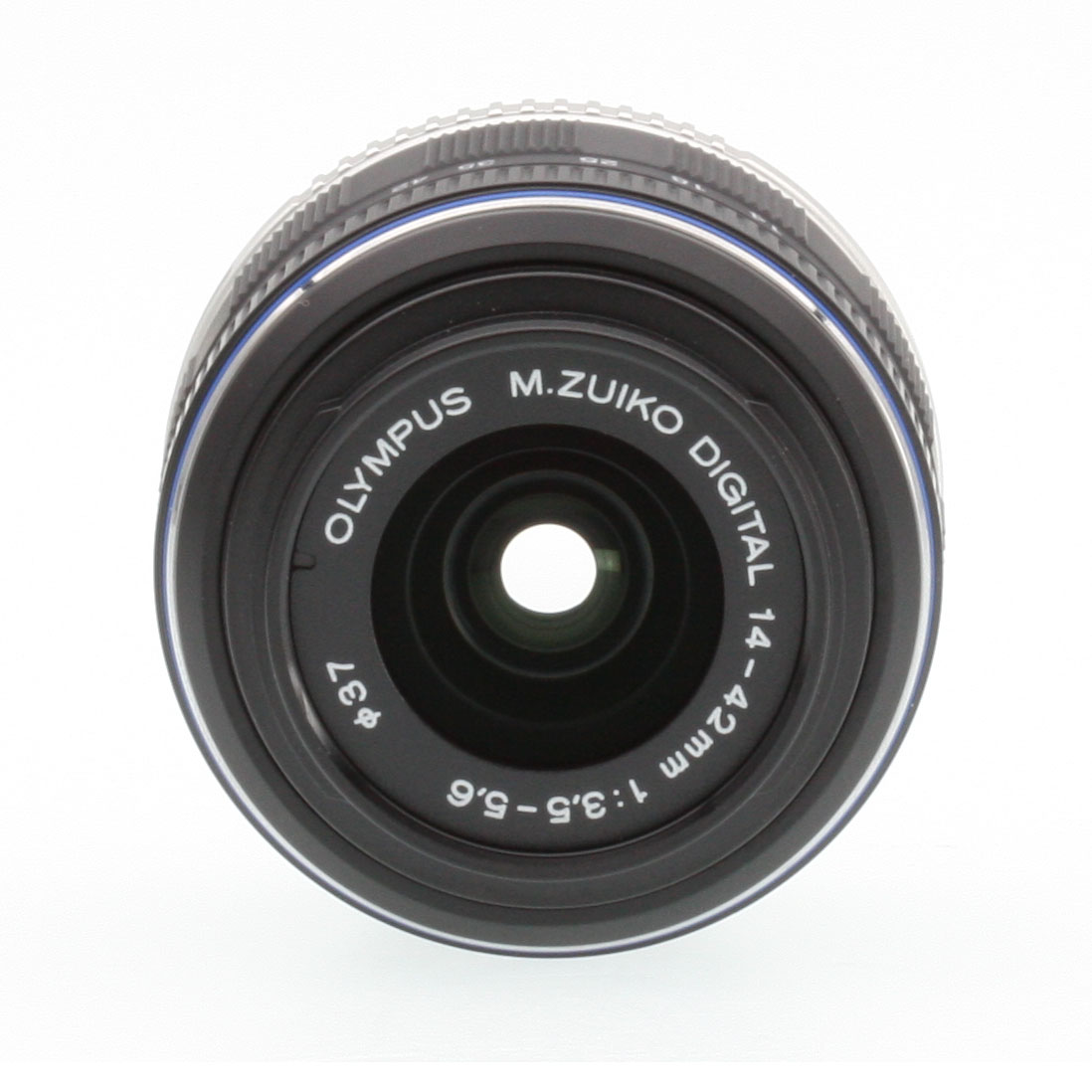 |
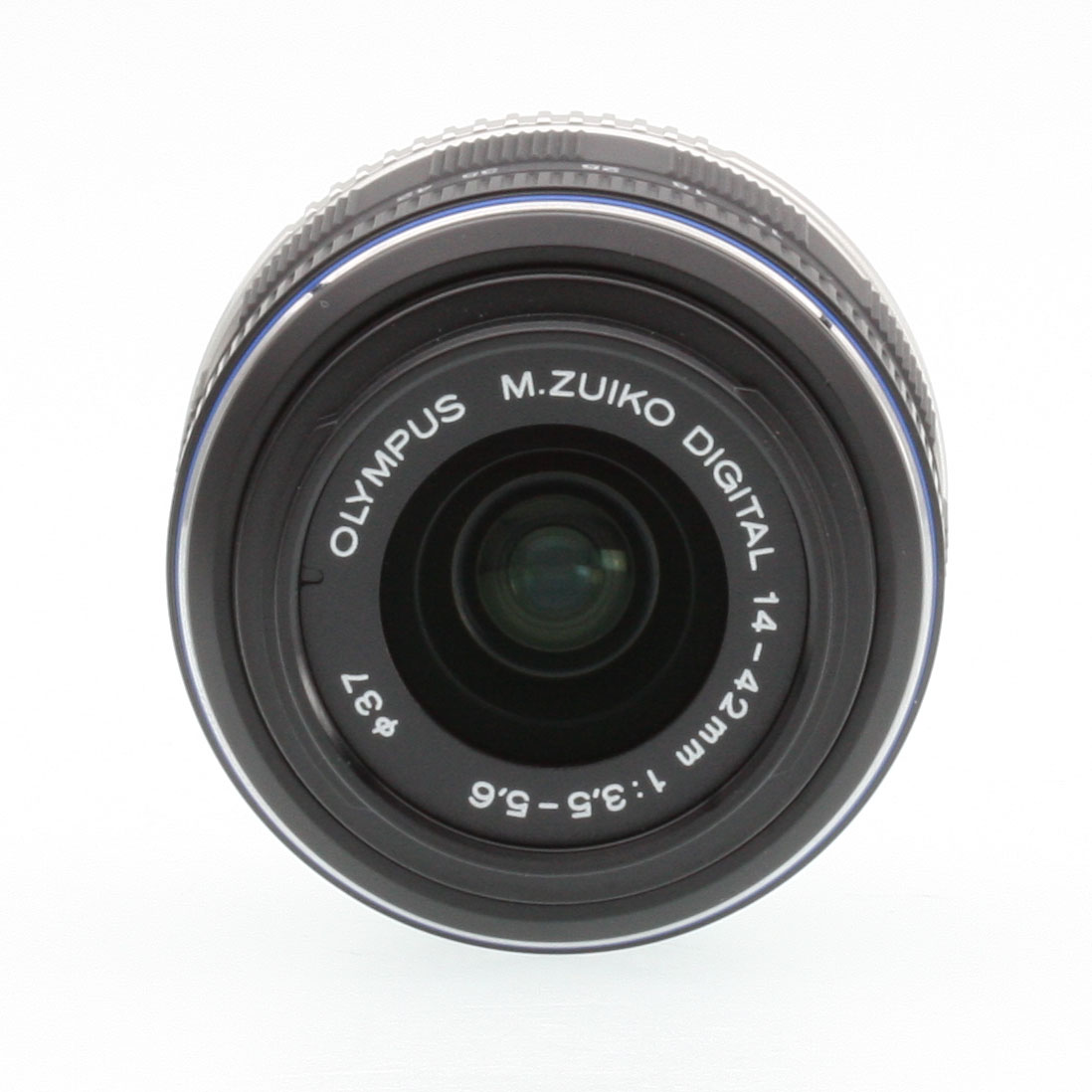 |
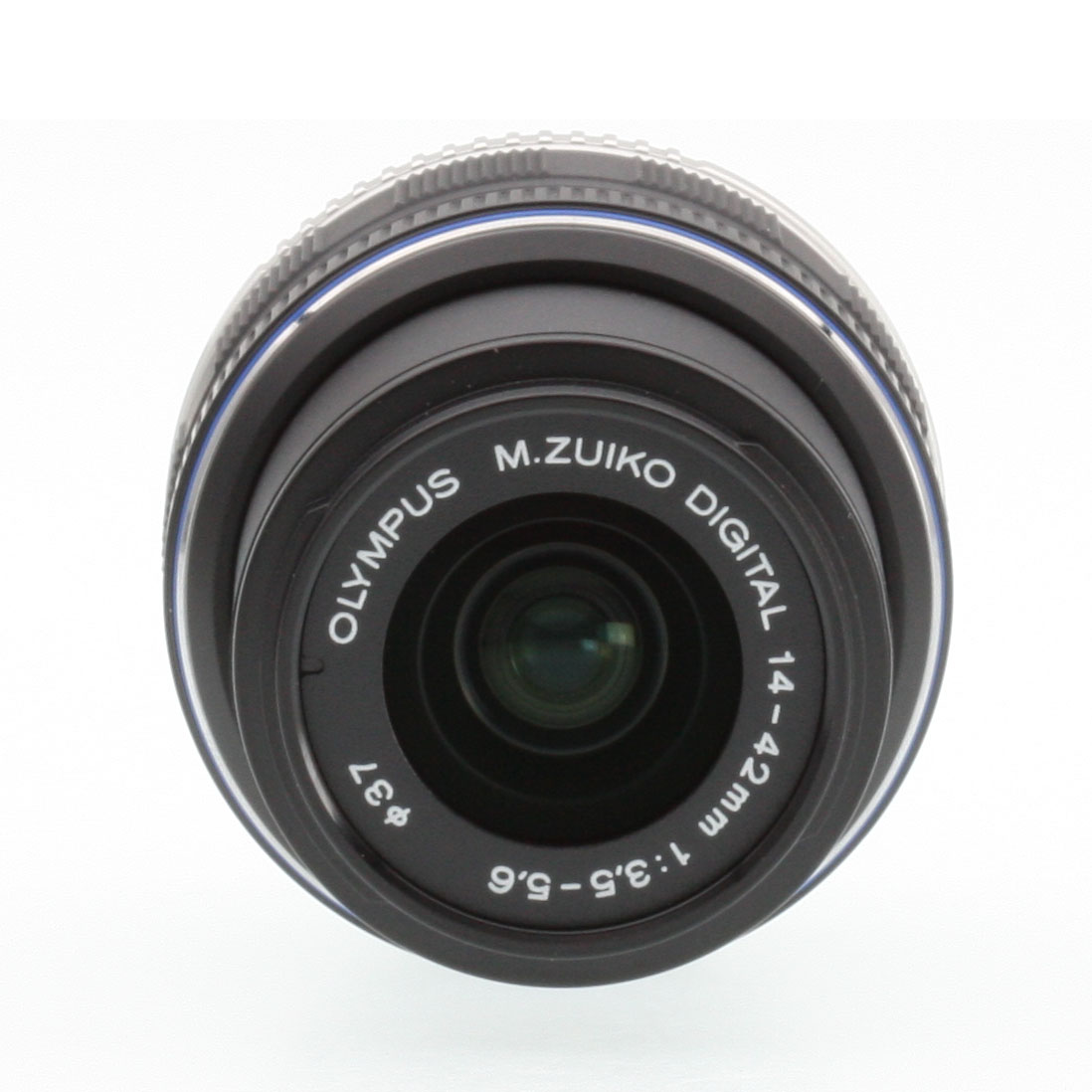 |
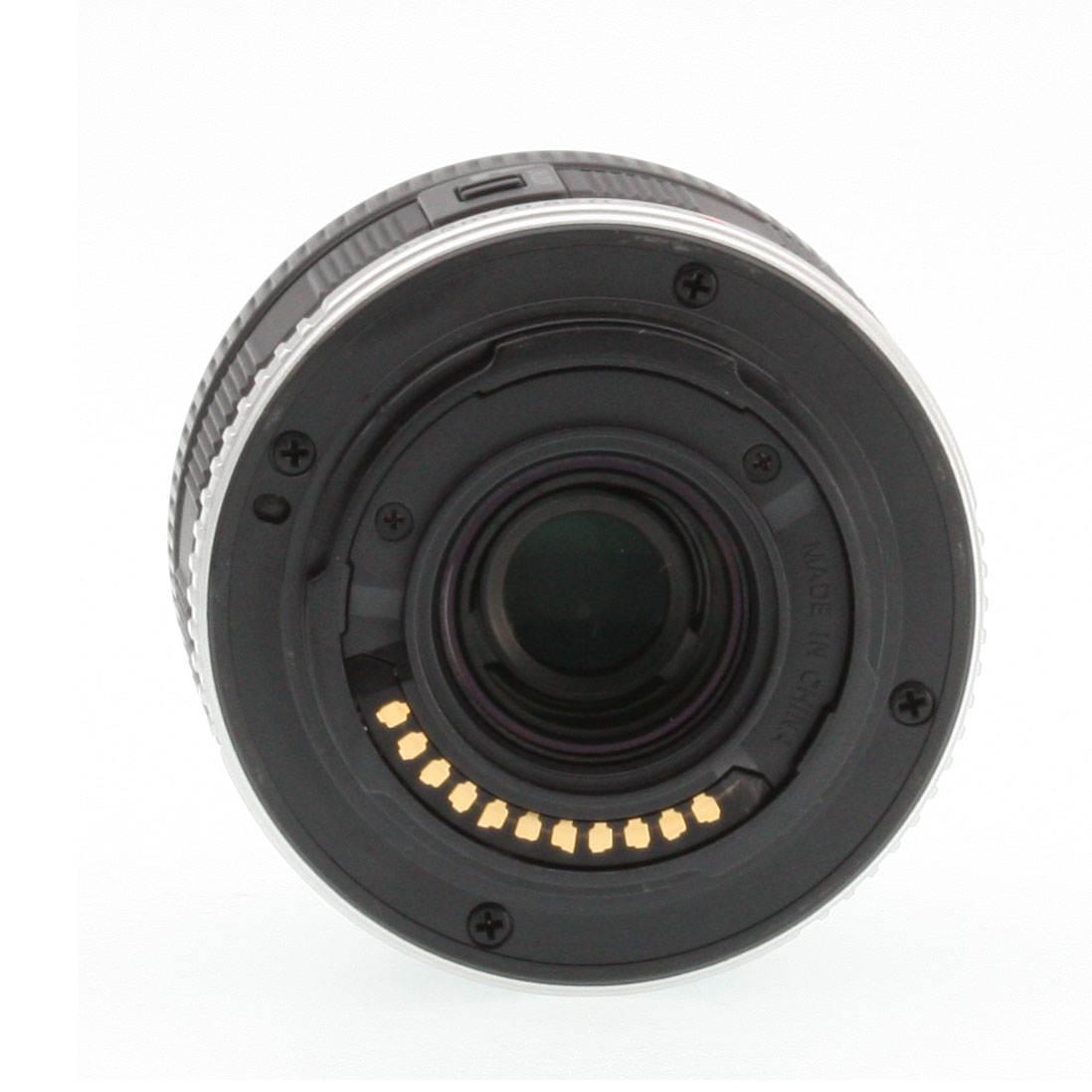 |
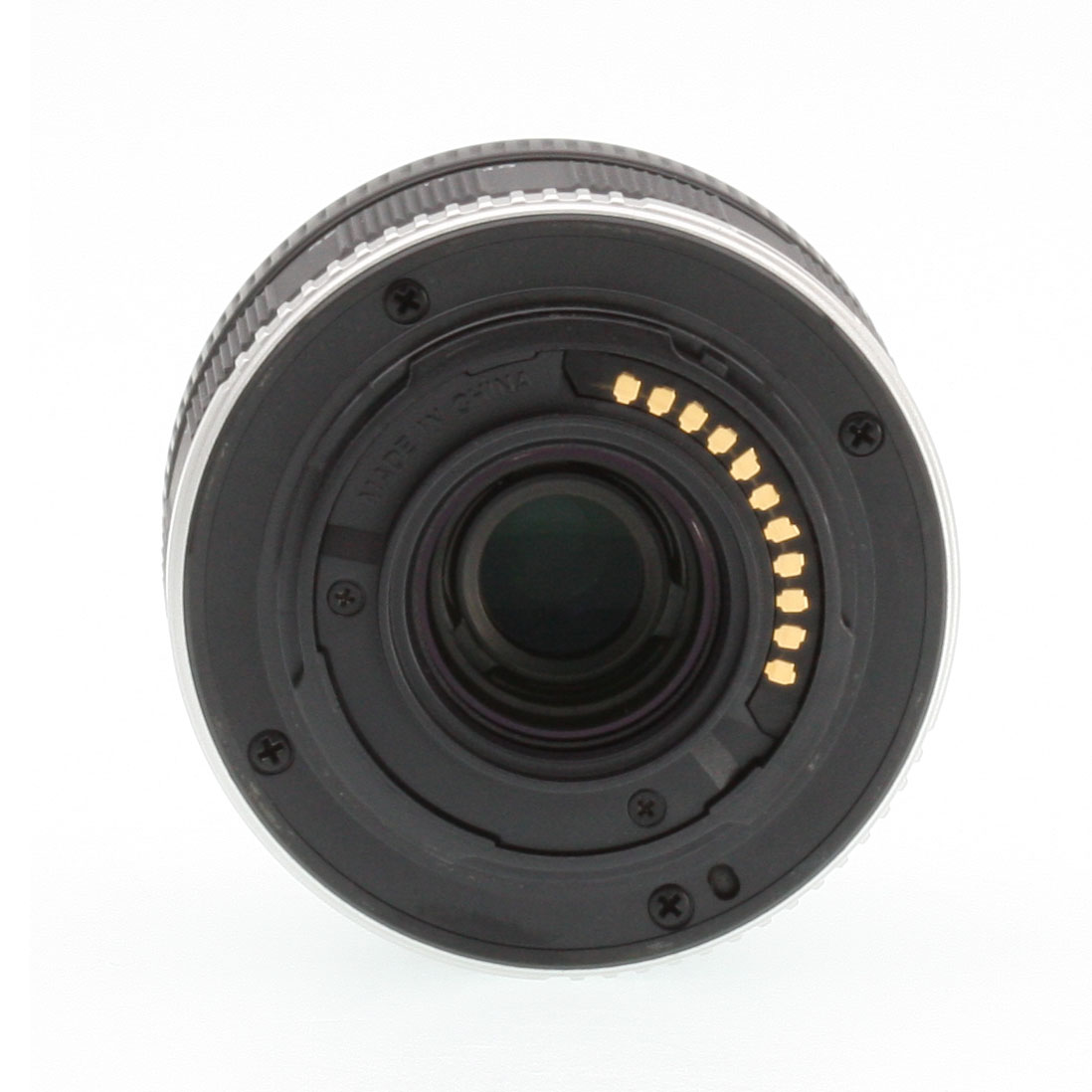 |
Sample Photos
The VFA target should give you a good idea of sharpness in the center and corners, as well as some idea of the extent of barrel or pincushion distortion and chromatic aberration, while the Still Life subject may help in judging contrast and color. We shoot both images using the default JPEG settings and manual white balance of our test bodies, so the images should be quite consistent from lens to lens.
As appropriate, we shoot these with both full-frame and sub-frame bodies, at a range of focal lengths, and at both maximum aperture and ƒ/8. For the ''VFA'' target (the viewfinder accuracy target from Imaging Resource), we also provide sample crops from the center and upper-left corner of each shot, so you can quickly get a sense of relative sharpness, without having to download and inspect the full-res images. To avoid space limitations with the layout of our review pages, indexes to the test shots launch in separate windows.
Olympus 14-42mm f/3.5-5.6 II M.Zuiko Digital
Your purchases support this site
Micro Four Thirds - Black
Olympus 14-42mm f/3.5-5.6 II M.Zuiko Digital User Reviews
-
I liked the optics well enough, although there were sometimes purple fringes in contrasty lighting. Corners weren't great but in general I ranked its optics at about the same level as the Mkii version of the Lumix 14-42. AF was fast, quiet and secureIt was poorly built and broke after only moderate use: would only shoot at short focal lengths due to a break in an internal ribbon cable. The retracting design (which probably contributed to the cable failure that killed the lens) sometimes lost me s
It's all in the pros/cons above. Mine was the MSC version. Its build wasn't confidence-inspiring and it broke after moderate use.
reviewed November 10th, 2020 -
cheap.great IQ but not quite as good as original, quiet a/f better suited for videobuild quality
original mk1 has better IQ. i prefer this lens over the mk2. price
reviewed October 1st, 2014 (purchased for $75) -
almost free kitlens, IQ, af speed, no AF problems at all, lighthood is extra, cheap JRC does the job
You must try before discarding this almost free kitlens. Way, way better then almost all kitlenses around.
reviewed June 24th, 2012
And a pity that Oluv still hasn't checked back here. Needs resetting the lens body combo. -
faster AF than previous version, lightlonger than previous version, soft, plastic mount!
as opposed to SLR-gear's review of this lens, my particular sample is considerably softer than the old version of this lens that i also own.
reviewed March 12th, 2012
the old version has a horribly slow AF and construction quality is arguable as it feels a bit wobbly, but the new version is softer overall, despite the improvement in AF speed.
also the plastic mount is a step backwards and to tell the truth i still prefer the old version because it is shorter overall and better suited with small mFT cameras. -
Excellent Sharpness with f/6.3 --> f/11Little soft wide open
I wanted to compare this with the ED L lens that came with my E-PL1 but I found it much softer!! Fortunately I had read the previous review posted by Bruce Coxley. I did what he had done, i.e., reset the lens and it changed the whole thing!
reviewed September 1st, 2011 (purchased for $213)
I found the lens excellent in sharpness, beating the 1st gen. ED L lens with aperture f/6.3 --> f/11 at all focal lengths I tested (14, 18, 24, 35, 42mm). At 24mm with f/6.3 and 35mm with f/6.3 and f/7.1 the ED L lens was sharper--but only in the corners.
This lens shines over the previous version especially with apertures f/7.1, f/8, f/9, and f/11.
The quality of the build is much better than that of the ED L. I also took few videos with it and found it whisper quiet when zooming--great for video!
Autofocus on E-PL1 also seems to be faster. I'll do some tests later to measure the different.
Overall a great lens! -
Smooth & easy to operateImage quality is very good after resetting lens with camera.
Distortion is well above average and no correction is needed on horizontal or vertical edges of newspaper pages. Macro setting images are very soft and will not sharpen enough to be useful. All these shots were on tripod and times shutter. IS was turned off. Much improvement needed to get Zuiko quality.
reviewed February 26th, 2011
After a long conversation with an Olympus tech rep we found out that the lens needs to be reset with the camera, as both units have firmware. Instructions are to shut off camera, lock and remove lens, re-install lens but do not unlock. Turn on camera. Go to reset in menu and follow instructions. Then you can unlock the lens and use. I did all of the above and the lens works very well.




